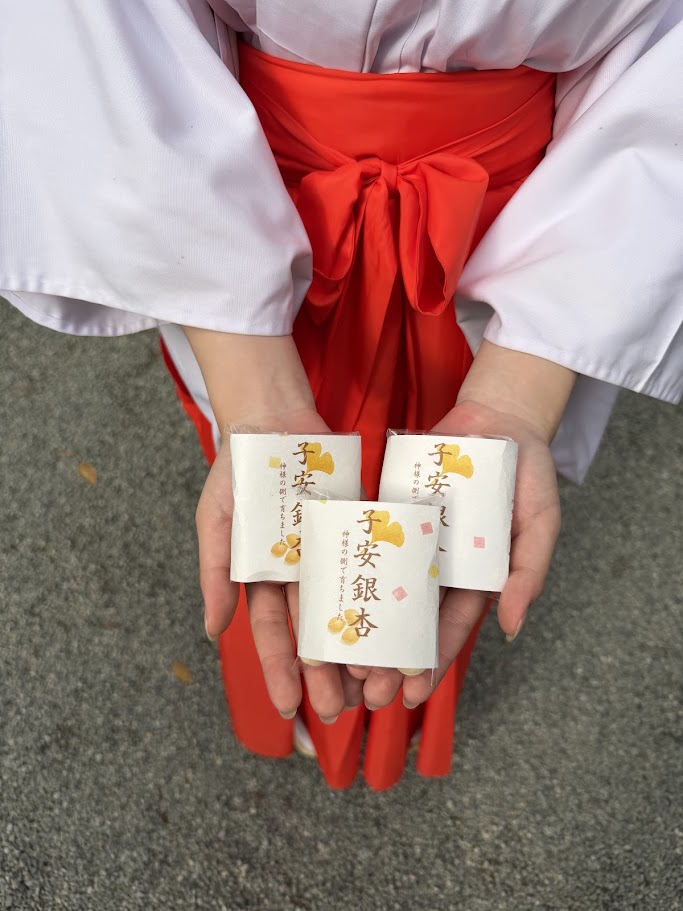金刀比羅様のご縁日は、毎月十日とされています。
そのため、一年のはじまりとなる一月十日に行われるお祭りが
「初金刀比羅祭」です。
しかし、人々の信仰はその日を待ちきれませんでした。
「一日でも早く福を授かりたい」
そんな願いから、前日の九日の夜に祭りが始まるようになり、
これを「宵こんぴら」と呼ぶようになります。
この風習は、香川の金刀比羅宮をはじめ、
各地の金刀比羅信仰に共通して見られるものです。
同じく十日を中心に行われる十日戎とも重なり、
海の神に福を願う人々の信仰の熱さがうかがえます。
子安神社の初金刀比羅祭も、
九日の宵こんぴらから十日の本祭へと続きます。
一年の運をひらき、厄を祓い、良き道を歩めるようにと、
多くの祈りが捧げられる日です。
また、金刀比羅様の一年は、
十二月十日の「納こんぴら祭」で締めくくられ、
一月九日・十日の初金刀比羅祭で新たに始まります。
納めと始まりが対となり、
福が一年を巡っていく――
そこには、暮らしに寄り添う信仰のかたちがあります。
子安神社は、東京安産の守り神として知られ、
命の誕生と成長を見守る神社です。
その境内に鎮まる金刀比羅様は、
厄を除け、運をひらく神様として、
安産や家族の無事を願う祈りを力強く支えています。
宵こんぴらから始まる初金刀比羅祭は、
早く福を授かりたいという人々の願いとともに、
新しい一年の歩みを静かに後押ししてくれるお祭りなのです。
English
Yoikonpira and the Hatsu Kotohira Festival
(Koyasu Shrine, Tokyo – Safe Childbirth)
The sacred day of Kotohira-sama is the 10th of each month.
For this reason, the festival held on January 10th is known as the Hatsu Kotohira Festival,
marking the first Kotohira observance of the year.
However, worshippers could not wait until the day itself.
Wishing to receive blessings as early as possible,
people began visiting the shrine on the night of January 9th.
This tradition came to be known as “Yoikonpira,” or the eve of Kotohira.
This custom is shared with Kotohira shrines across Japan and closely resembles the Tenno Ebisu Festival,
revealing the deep devotion of those who pray to deities of the sea for good fortune and prosperity.
At Koyasu Shrine, the Hatsu Kotohira Festival begins on the evening of January 9th
and continues into the main festival on January 10th.
It is a time to pray for the opening of good fortune, the removal of misfortune,
and a safe and prosperous year ahead.
Kotohira-sama’s yearly cycle is completed with the Nō-Kotohira Festival on December 10th
and begins anew with the Hatsu Kotohira Festival in January.
The closing and opening of the year form a continuous flow of blessings,
rooted in faith closely connected to daily life.
Koyasu Shrine is widely known as a shrine for safe childbirth in Tokyo,
watching over birth, growth, and family well-being.
Within its grounds, Kotohira-sama is revered as a deity who wards off misfortune
and opens the path forward, supporting prayers for safe childbirth and family protection.
Beginning with Yoikonpira, the Hatsu Kotohira Festival gently guides worshippers
into a new year, carrying with it the heartfelt wish to receive blessings as early as possible.

